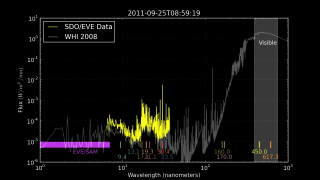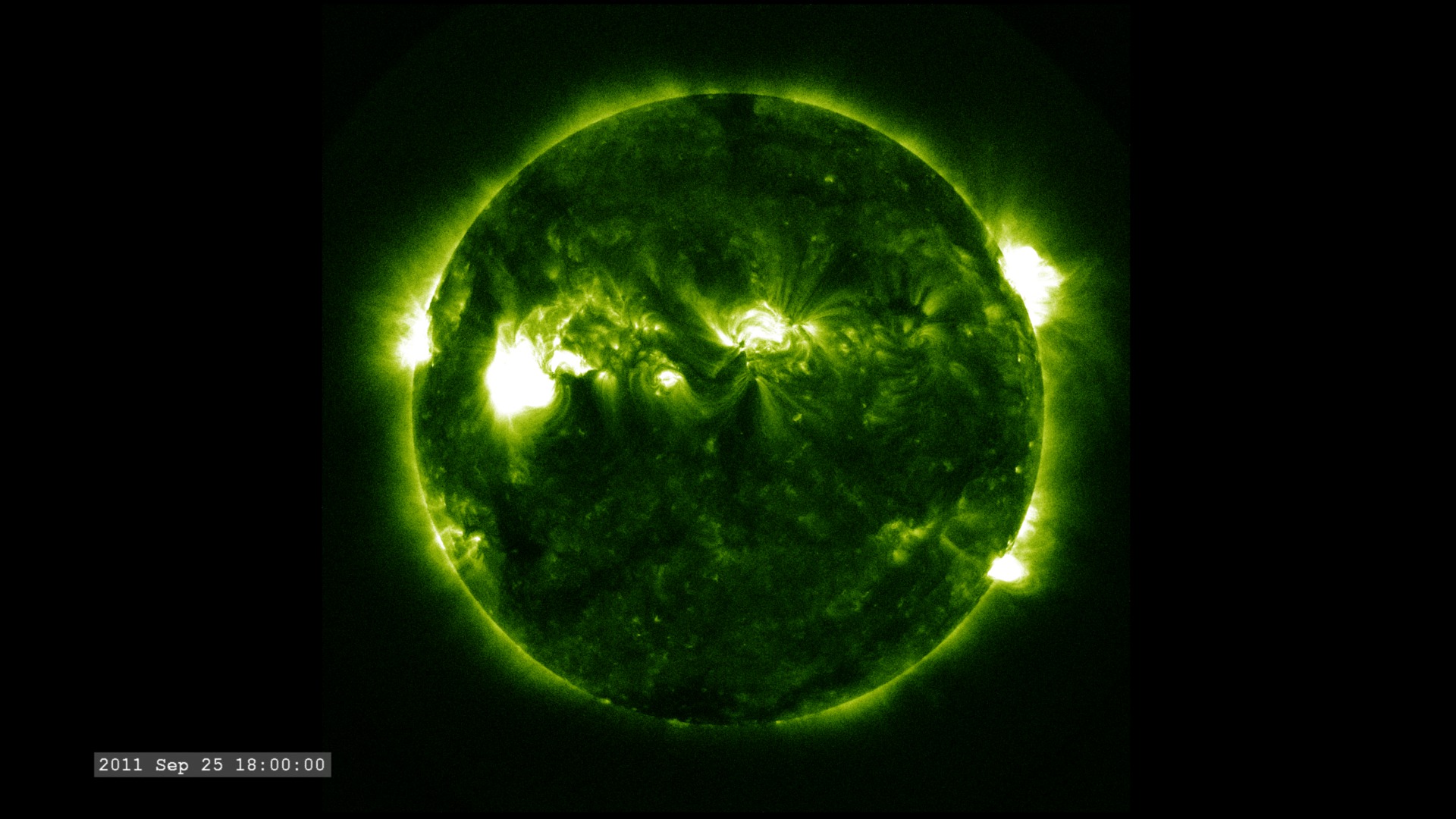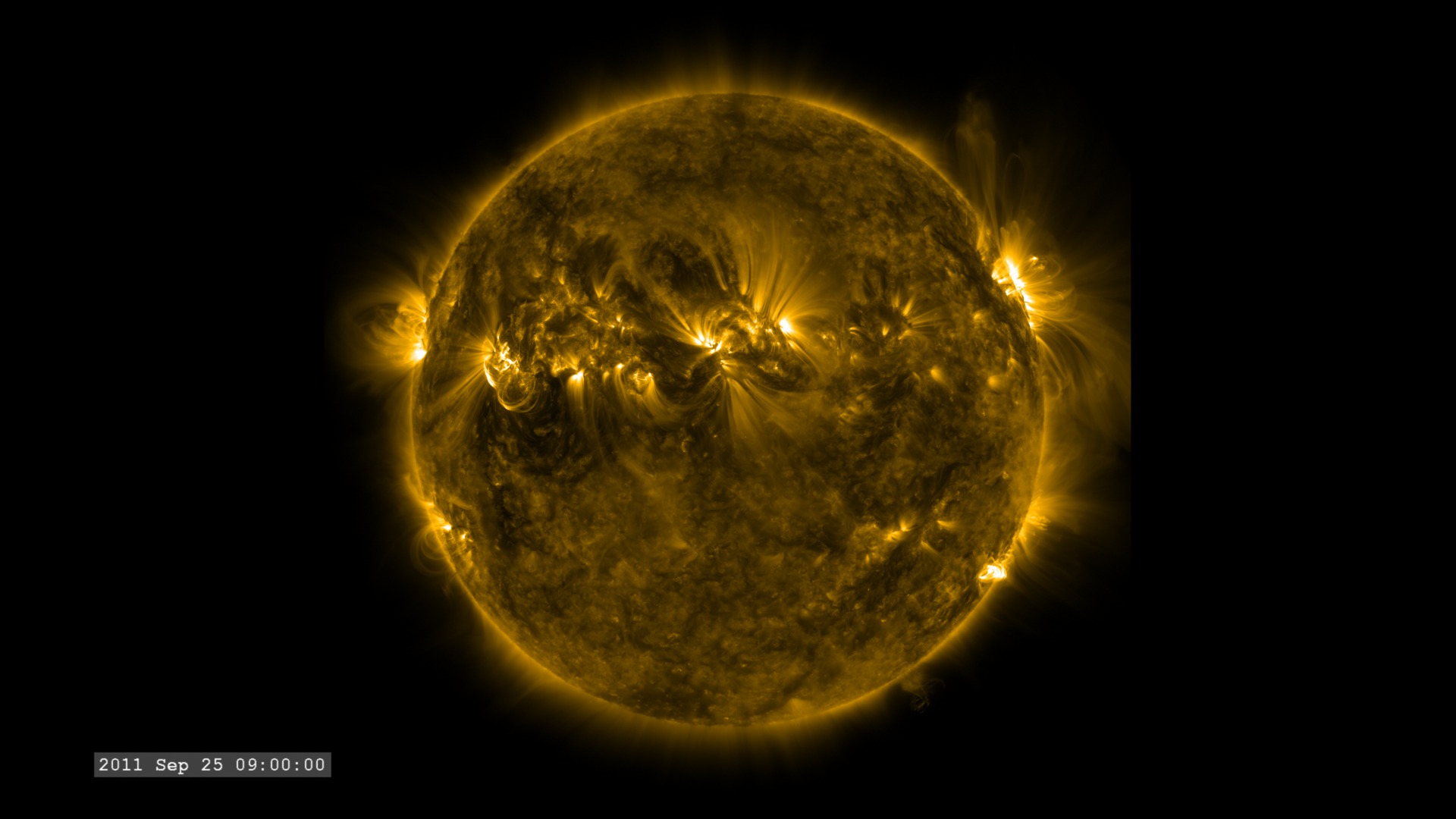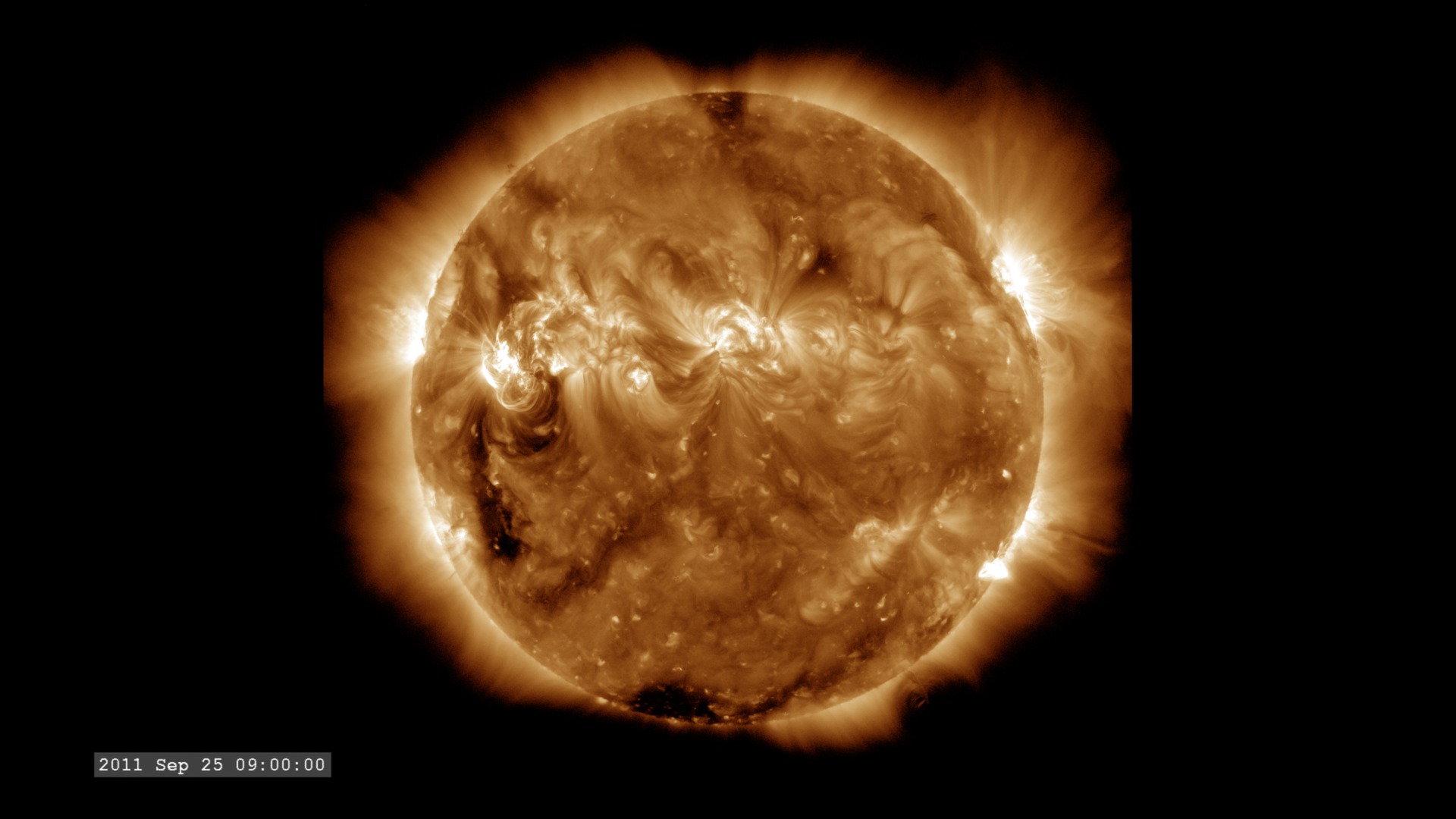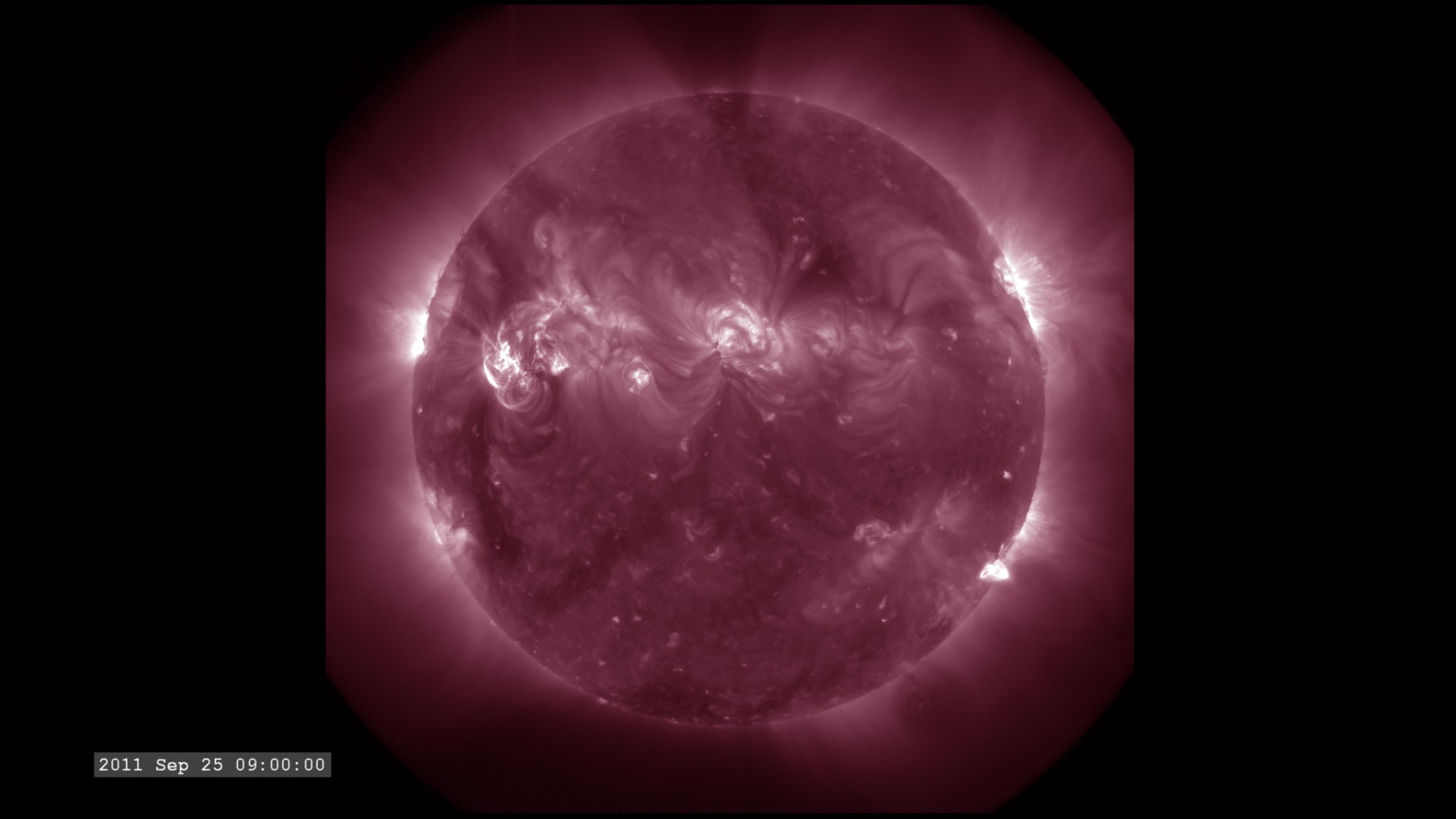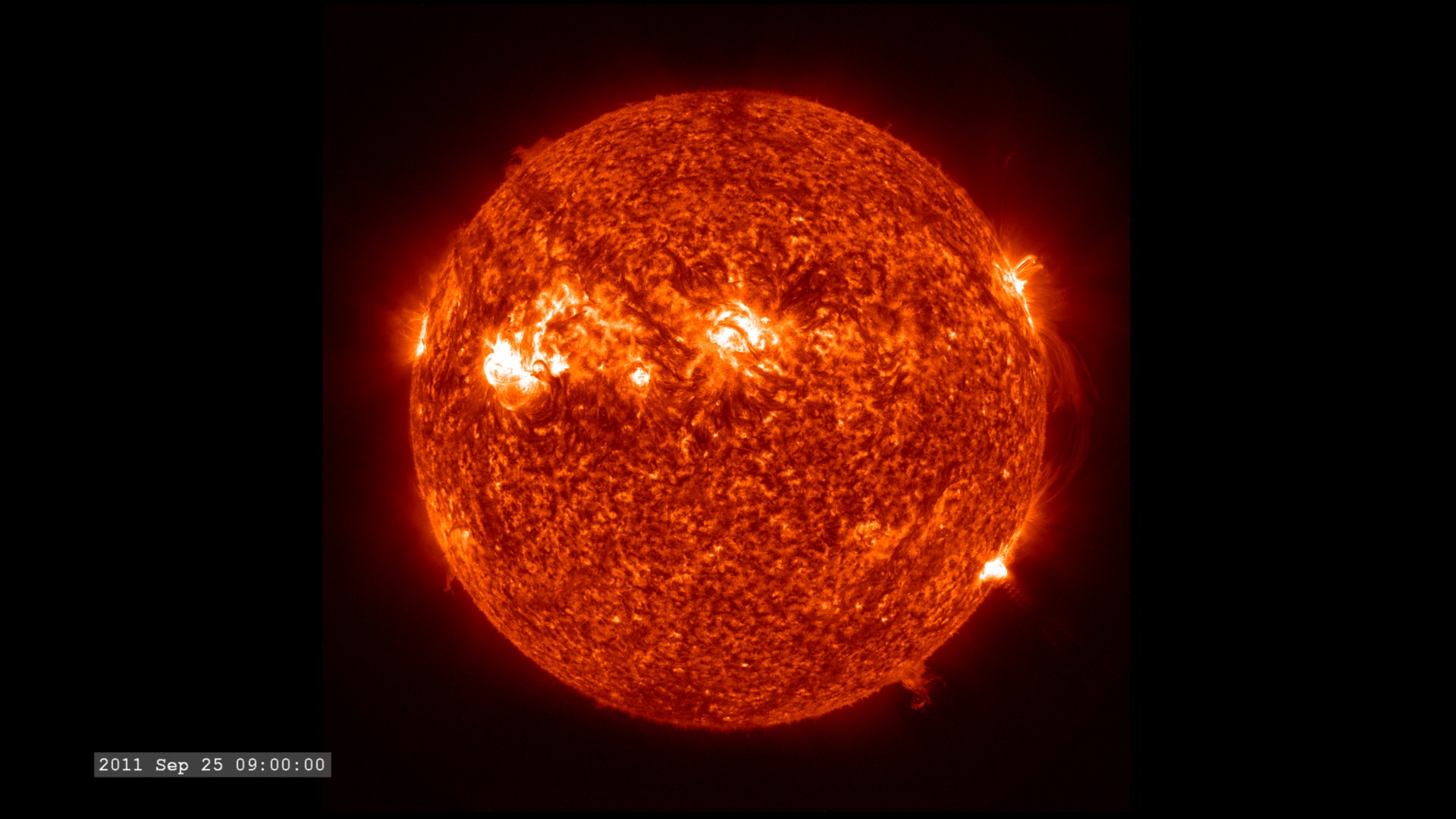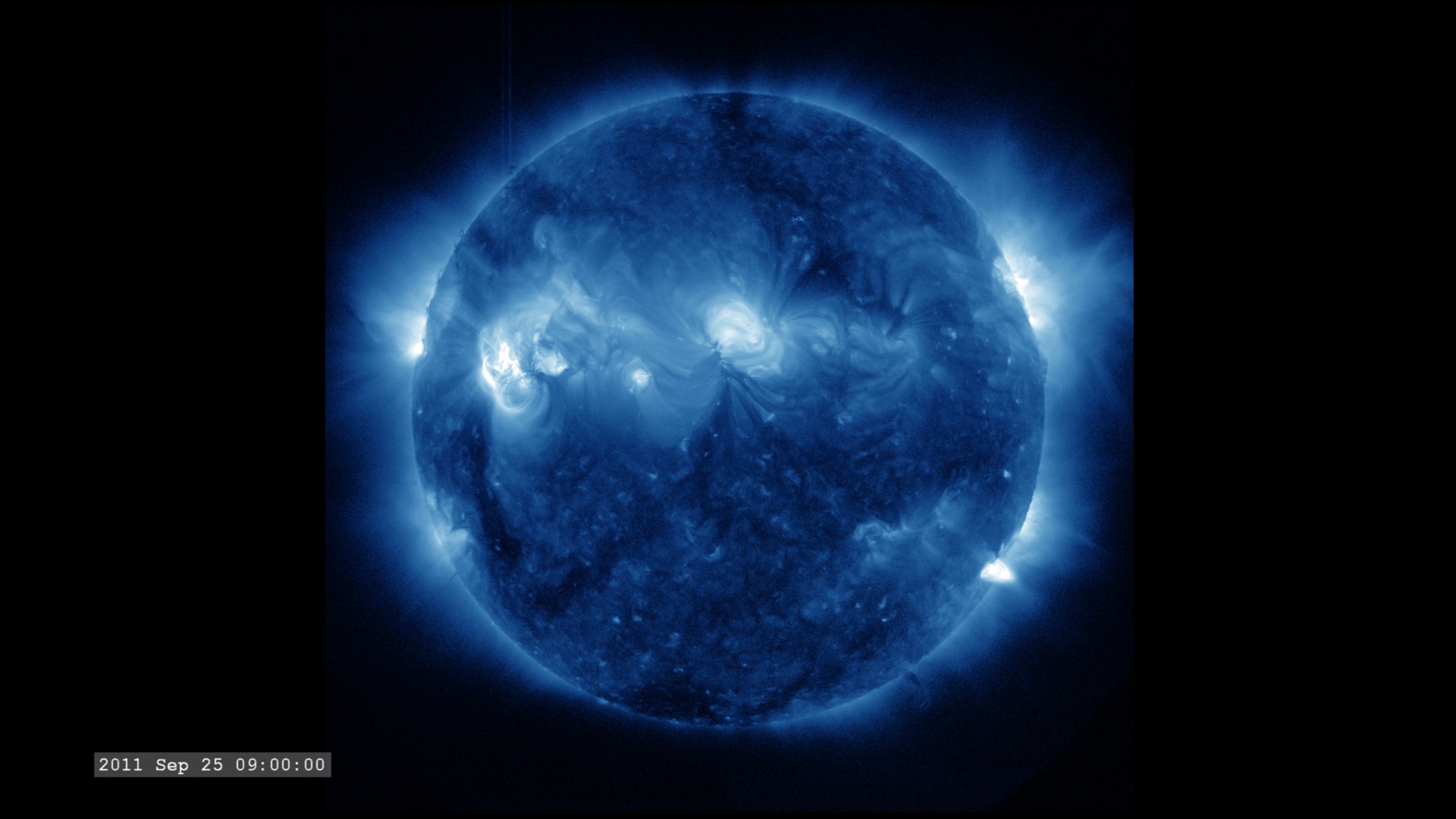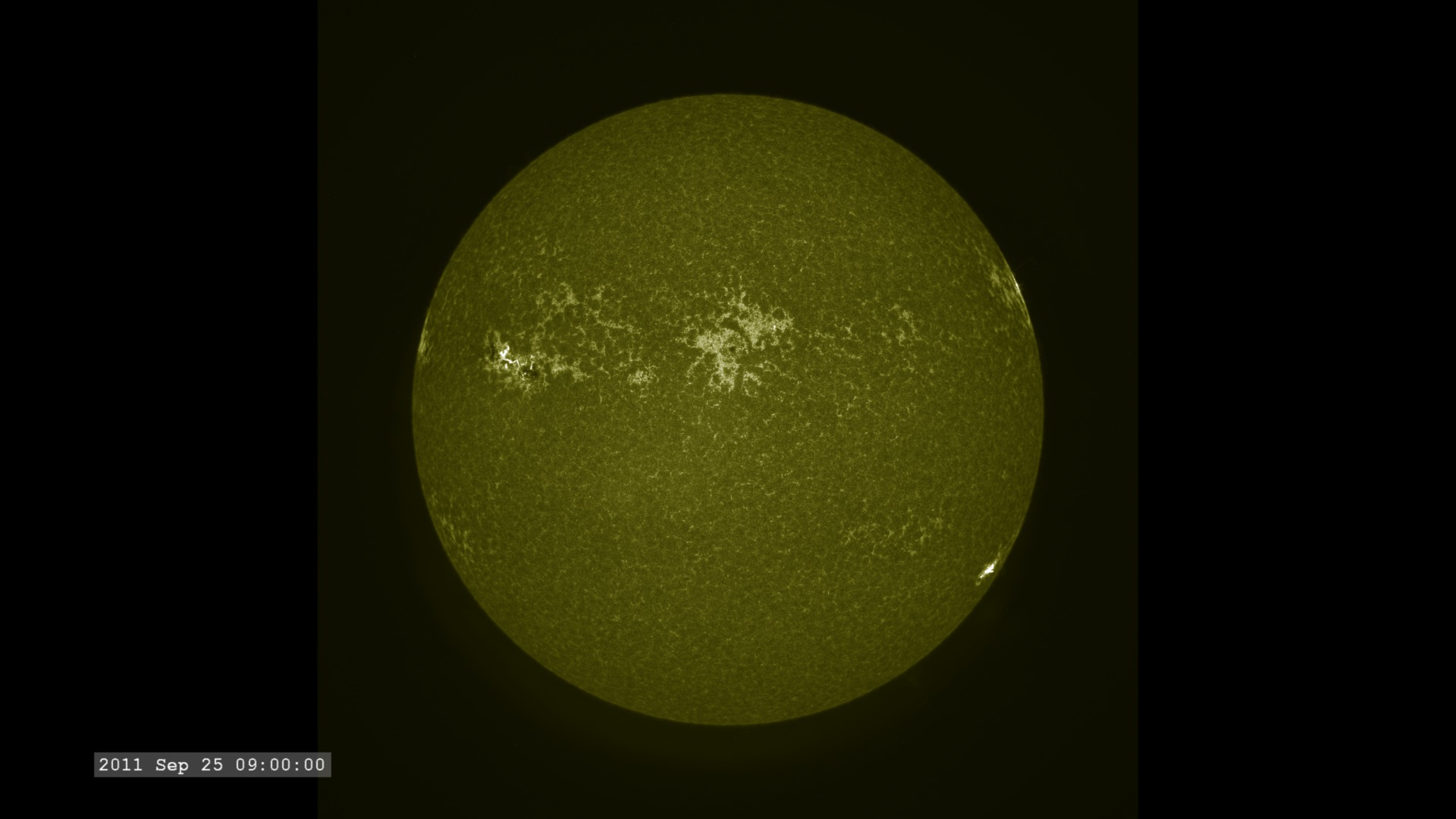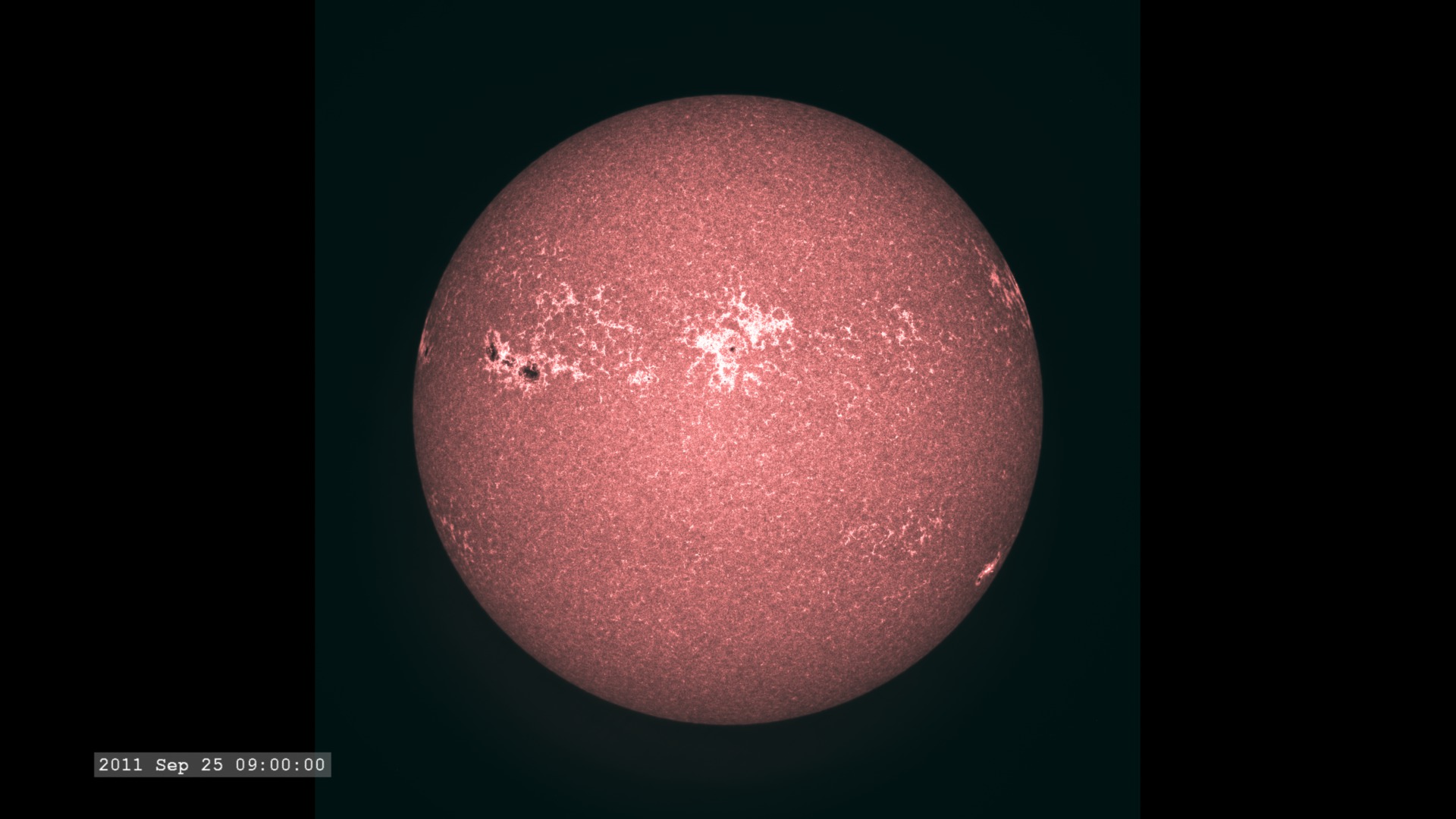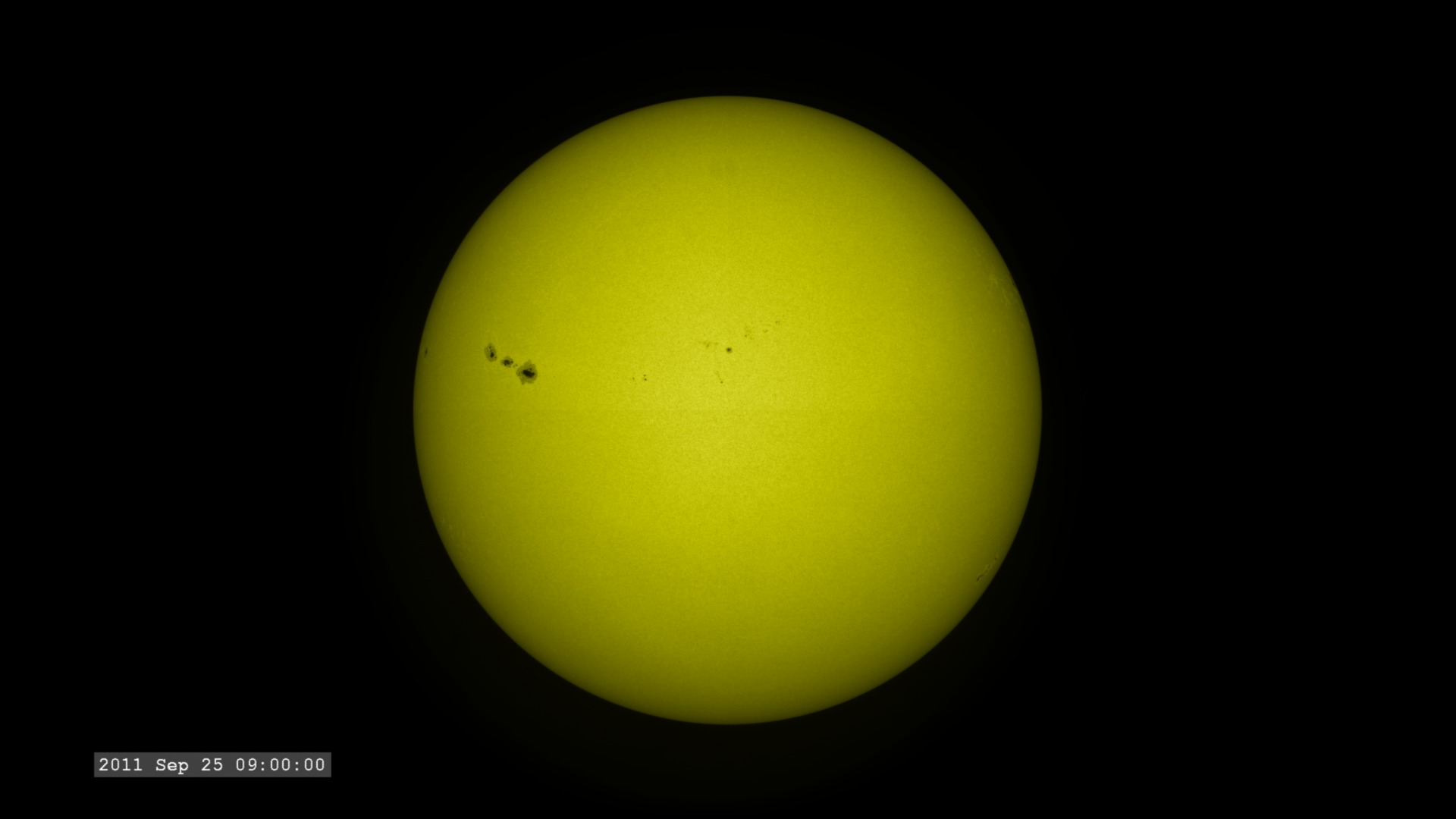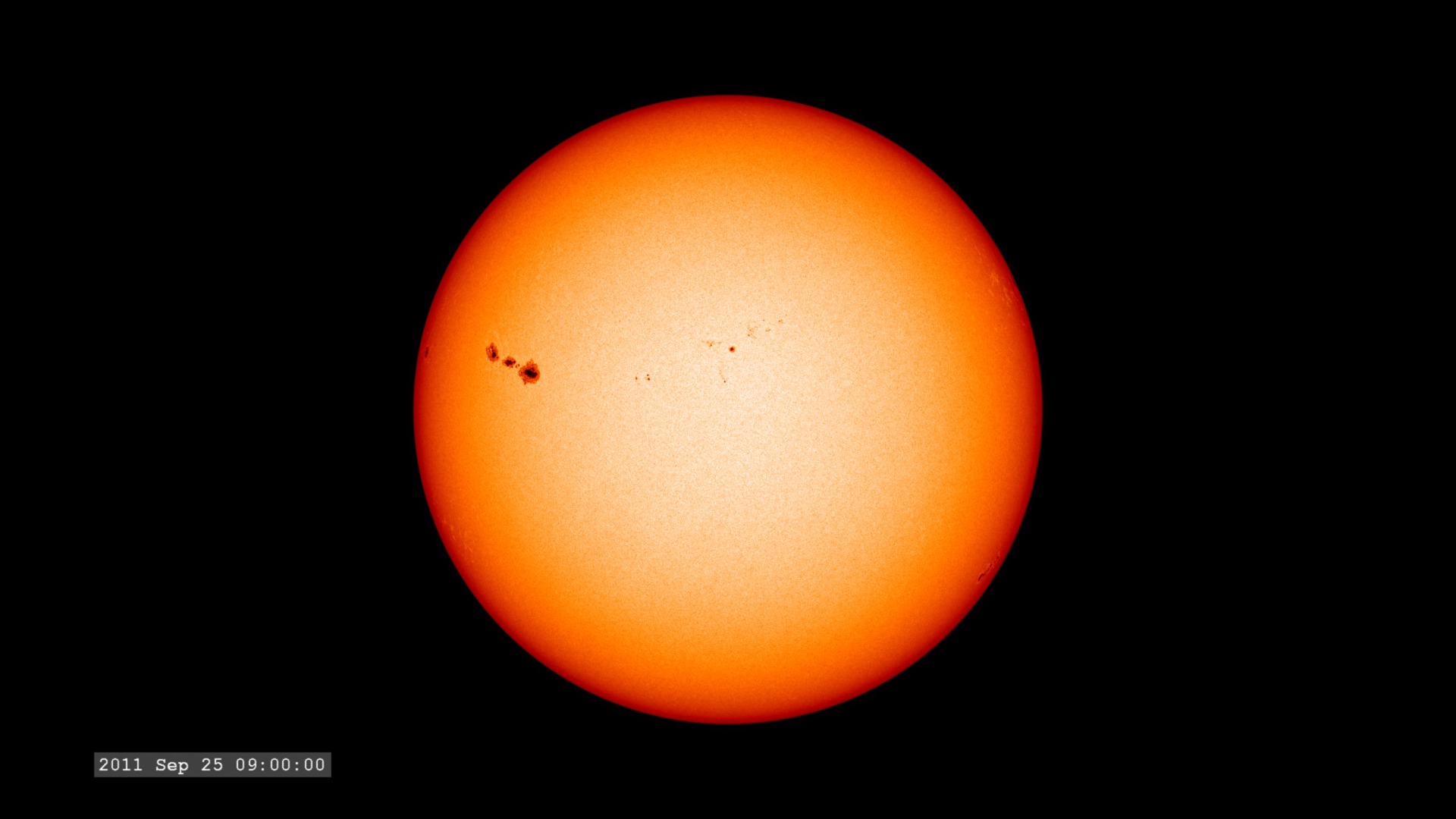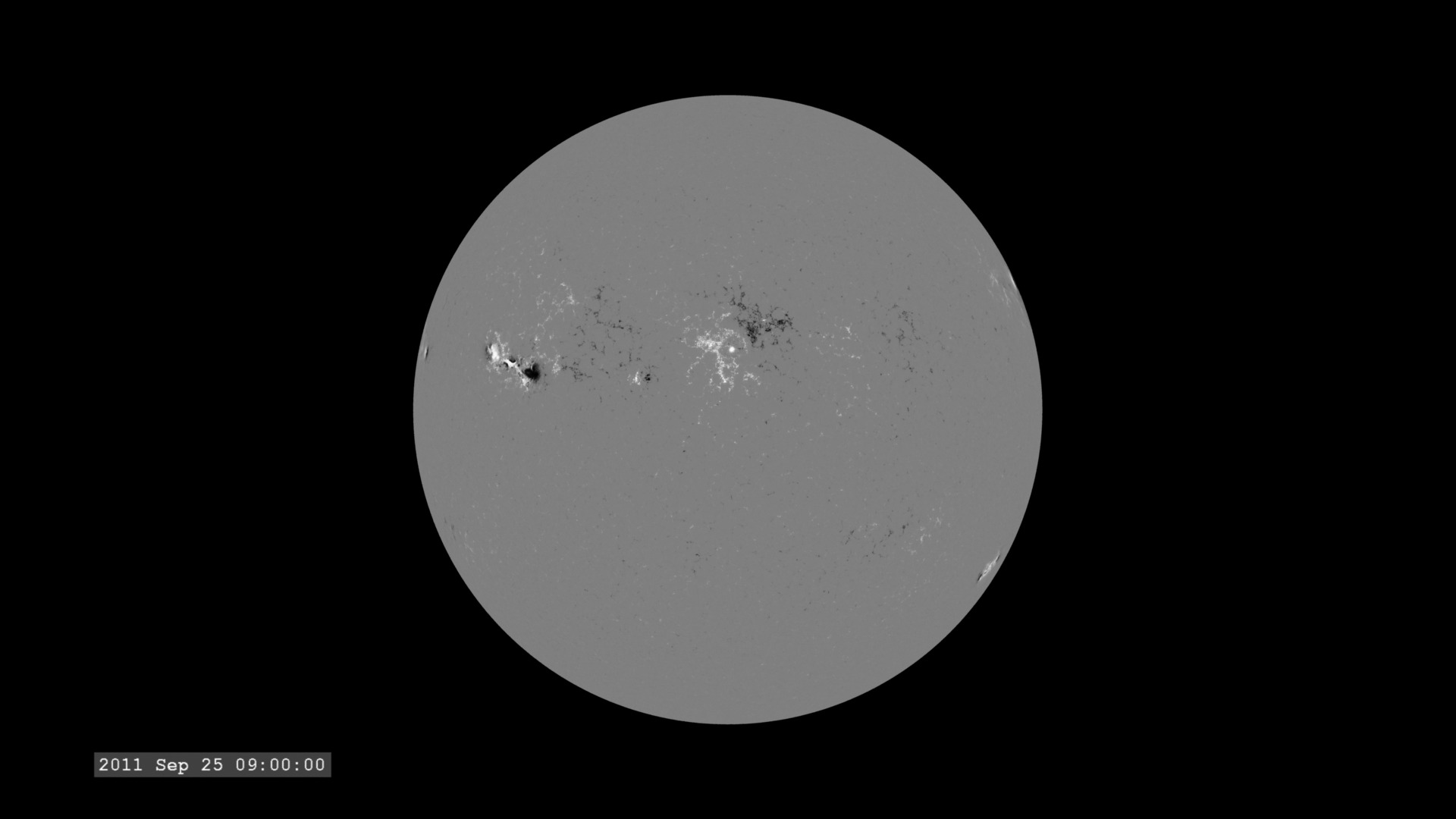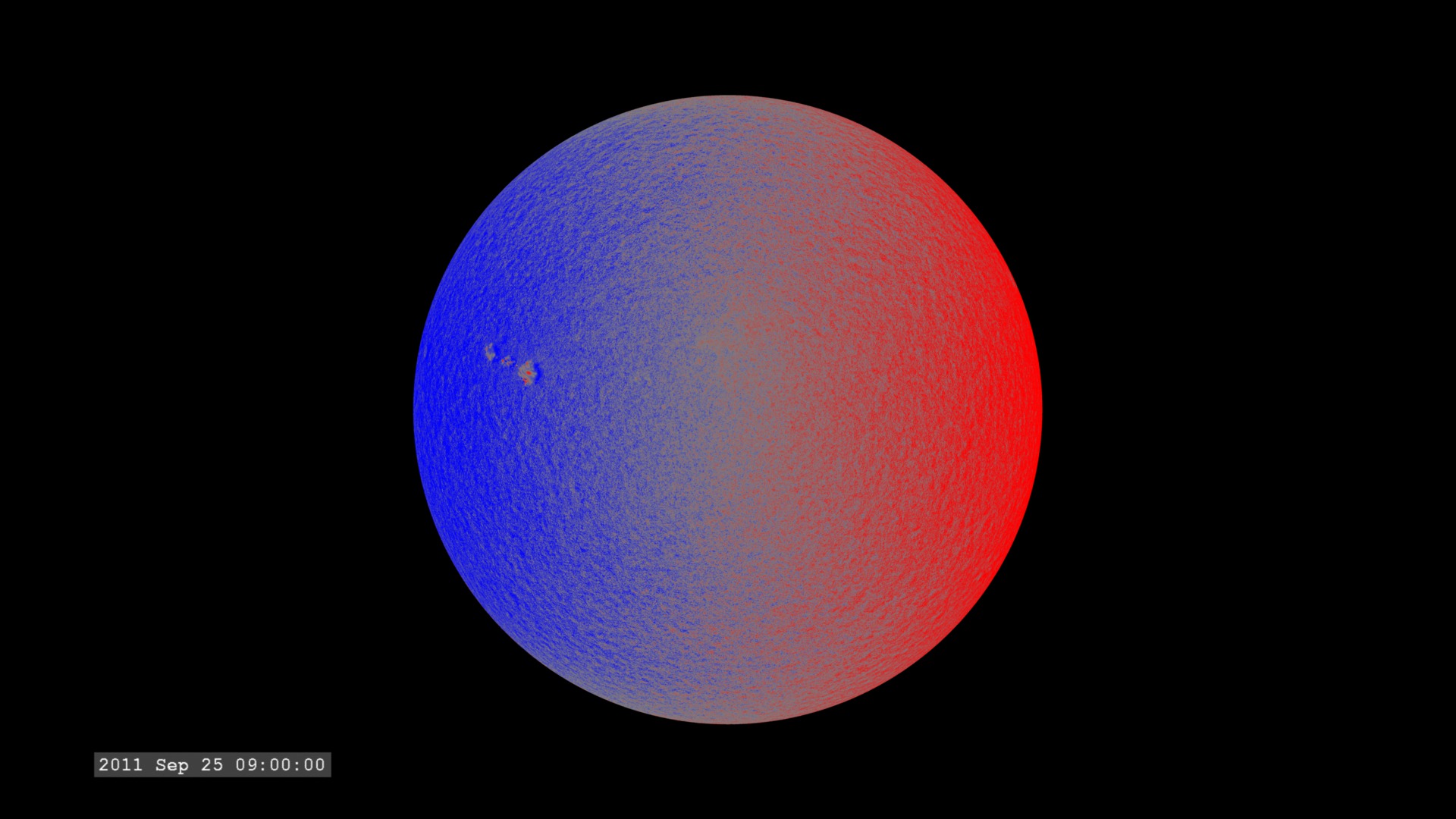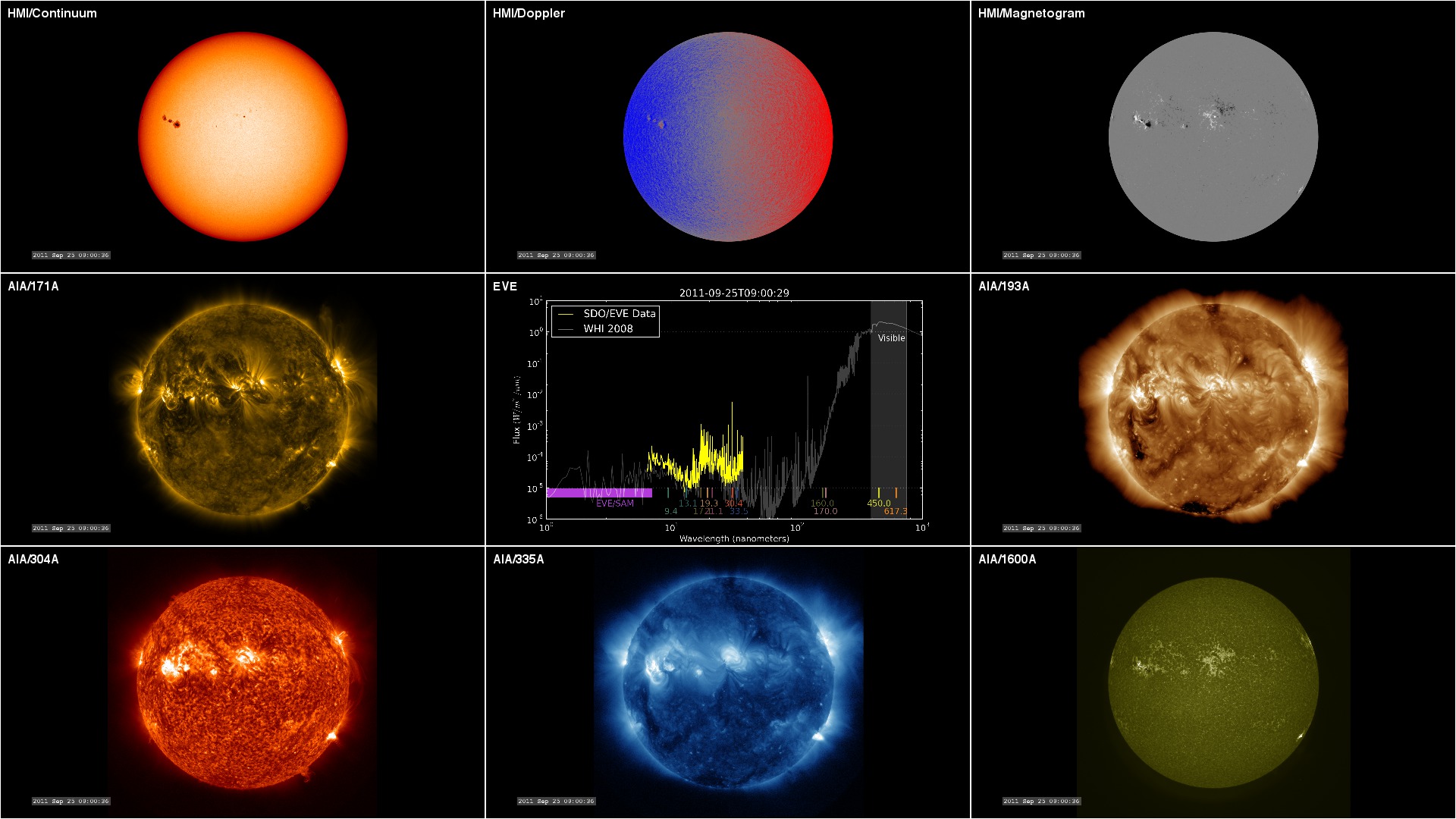The Active Sun from SDO: 131 Ångstroms
The Solar Dynamics Observatory (SDO) observes the Sun with many different instruments, in many different wavelengths of light. Many of these capabilities are not possible for ground-based observatories - hence the need for a space-based observing platform.
This movie is generated for a wavelength of 131 Ångstroms (13.1 nanometers) which highlights a spectral line emitted by iron atoms that have lost 19 and 22 electrons (also known as iron-20 or Fe XX; and iron-23 or FeXXIII) at temperatures of 10,000,000 K. Temperatures like this represent material in a solar flare.
This visualization is one of a set of visualizations (others linked below) covering the same time span of 17 hours over the full wavelength range of the mission. They are setup to play synchronously on a Hyperwall, or can be run individually.
The images are sampled every 36 seconds, 1/3 of the standard time-cadence for SDO. This visualization is useful for illustrating how different solar phenomena, such as sunspots and active regions, look very different in different wavelengths of light. These differences enable scientists to study them more completely, with an eventual goal of improving Space Weather forecasting.
Stand-alone HD1080 Movie of AIA 131Å imagery.
Full-resolution 4Kx4K frames and 1Kx1K preview movies.
Credits
Please give credit for this item to:
NASA/Goddard Space Flight Center Scientific Visualization Studio, the SDO Science Team, and the Virtual Solar Observatory.
-
Animator
- Tom Bridgman (Global Science and Technology, Inc.)
-
Producers
- Scott Wiessinger (USRA)
- Genna Duberstein (USRA)
-
Scientist
- Phil Chamberlin (NASA/GSFC)
Missions
This page is related to the following missions:Series
This page can be found in the following series:Datasets used
-
AIA 131 (131 Filter) [SDO: AIA]
ID: 730This dataset can be found at: http://jsoc.stanford.edu/
See all pages that use this dataset
Note: While we identify the data sets used on this page, we do not store any further details, nor the data sets themselves on our site.
Release date
This page was originally published on Tuesday, November 20, 2012.
This page was last updated on Sunday, February 2, 2025 at 10:08 PM EST.
